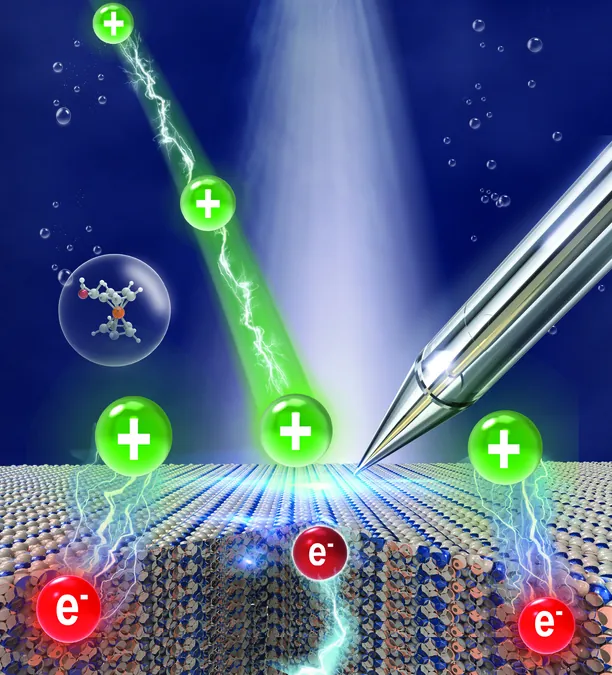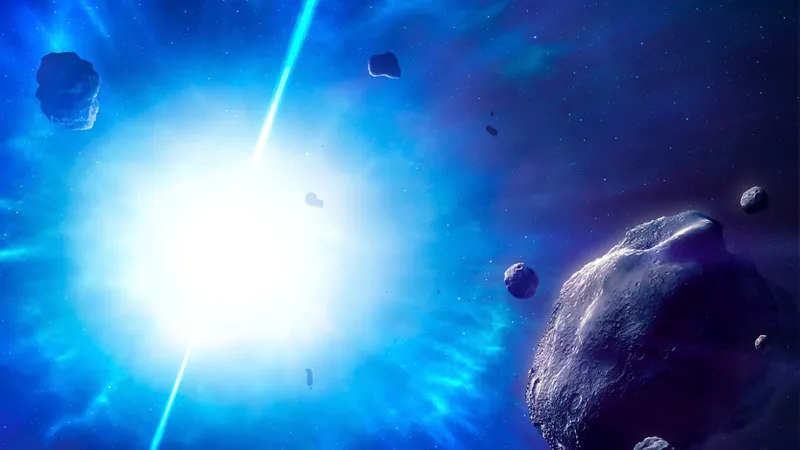
Revolutionizing Photocatalysis: New Insights into Charge Transfer Dynamics
2025-04-10
Author: Noah
Unlocking the Secrets of Photocatalysis
Photocatalysis is a fascinating process that hinges on three essential stages: absorbing light, separating and transferring charges, and reacting chemically. These intricate reactions unfold at the solid-liquid interface, where the charged environment plays a pivotal role in determining how swiftly these reactions occur. While much research has focused on charge transfer in solid catalysts, the real game-changer lies in understanding how surface charges interact with the electrolyte.
A Breakthrough Study Unveiled
In a groundbreaking study, researchers from the Dalian Institute of Chemical Physics (DICP) have developed a novel method to directly measure surface charges in liquid environments. Led by Professors Fan Fengtao and Li Can, their work published in the Journal of the American Chemical Society introduces a charged probe that isolates electrostatic forces from long-range interactions. This innovation allows for an unprecedented mapping of electric field distributions within the electrical double layer, thereby revealing critical insights about surface potential and photovoltage in real-world liquid conditions.
Revealing the Charge Transfer Mechanism
The research uncovered a key phenomenon: surface charges at the solid-liquid interface serve as an additional driving force that actively draws photogenerated electrons to the surface, enhancing the charge transfer reaction. This was a game changer! They quantitatively analyzed how surface potential in electrolytes fluctuates with varying pH levels, achieving micro- to nanoscale observations.
Optimizing Reaction Conditions for Efficiency
By correlating surface potential with the flux of reaction products, the team demonstrated that the rate of photocatalytic oxygen evolution is controlled by the electric field induced by surface charges. They also pinpointed the optimal pH range necessary for the effective spatial separation of photogenerated electrons and holes, visualizing the complete charge transfer journey from the space charge region to the active reaction sites.
Implications for Future Research
Prof. Fan remarked, "This imaging framework serves as a robust platform to directly measure surface potential and reaction current under operational conditions. It opens new avenues for exploring photocatalytic charge transfer kinetics at the nanoscale, paving the way for the design of more efficient photocatalysts and optimization of reaction conditions." Prof. Li echoed these sentiments, stating that their findings tackle some of the toughest challenges in photocatalytic reactions.
With this cutting-edge approach, we stand on the brink of a new era in photocatalysis that could transform how we harness energy and conduct chemical reactions. Stay tuned as researchers continue to unlock the mysteries of this vital process!









 Brasil (PT)
Brasil (PT)
 Canada (EN)
Canada (EN)
 Chile (ES)
Chile (ES)
 Česko (CS)
Česko (CS)
 대한민국 (KO)
대한민국 (KO)
 España (ES)
España (ES)
 France (FR)
France (FR)
 Hong Kong (EN)
Hong Kong (EN)
 Italia (IT)
Italia (IT)
 日本 (JA)
日本 (JA)
 Magyarország (HU)
Magyarország (HU)
 Norge (NO)
Norge (NO)
 Polska (PL)
Polska (PL)
 Schweiz (DE)
Schweiz (DE)
 Singapore (EN)
Singapore (EN)
 Sverige (SV)
Sverige (SV)
 Suomi (FI)
Suomi (FI)
 Türkiye (TR)
Türkiye (TR)
 الإمارات العربية المتحدة (AR)
الإمارات العربية المتحدة (AR)